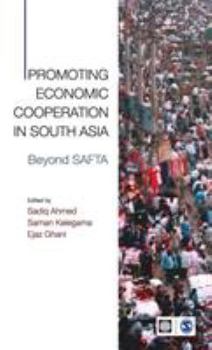Promoting Economic Cooperation in South Asia: Beyond SAFTA
This volume examines the dichotomy between the two faces of South Asia-one poverty stricken and lagging in development, the other highly urbanized and growing rapidly-and tries to find a workable solution to bridge this gap. It looks at the many policy and institutional constraints that contribute to this dichotomy, especially regional conflict that has made South Asia one of the least integrated regions of the world. This volume argues that in addition to policy and institutional reforms aimed at removing domestic constraints to growth and job creation, market integration and regional cooperation ought to be key elements of a regional strategy for removing this dichotomy and eliminating poverty over the longer term. The authors establish the need for two types of market integration in South Asia-providing countries, especially the land-locked ones, with broader access to regional and global markets; and integrating the lagging regions within each country with growth centers without regard to boundaries. The book is organized into four parts. Part I talks about the imperative for cooperation in terms of the development context. Part II looks at a number of specific areas of options and opportunities for cooperation, including trade, trade facilitation, transport, financial and food crises, migration and tourism. Part III provides the private sector's perspectives on regional cooperation based on contributions from business leaders of Bangladesh, India, Pakistan and Sri Lanka. Finally, Part IV deals with a number of political economy issues relating to distribution of gains from cooperation among participating countries and how SAARC can be made more effective in implementing agreed programs.
Format:Hardcover
Language:English
ISBN:8132103114
ISBN13:9788132103110
Release Date:March 2010
Publisher:Sage Publications Pvt. Ltd
Length:464 Pages
Weight:1.55 lbs.
Dimensions:1.2" x 5.8" x 8.5"
Customer Reviews
0 rating





